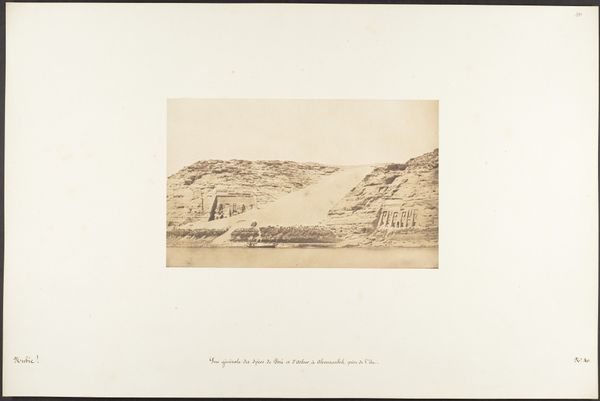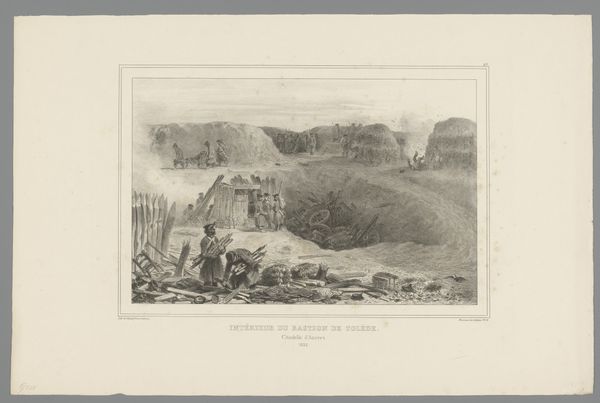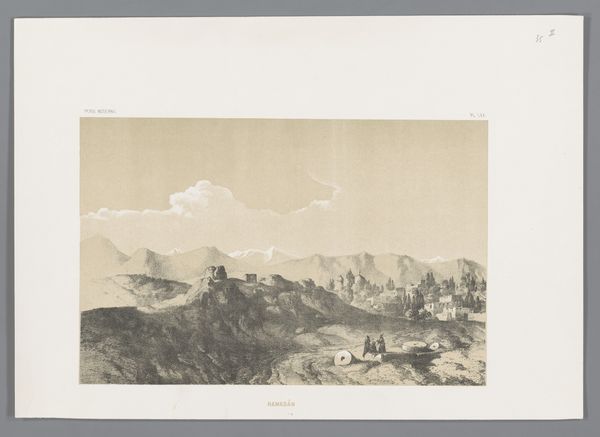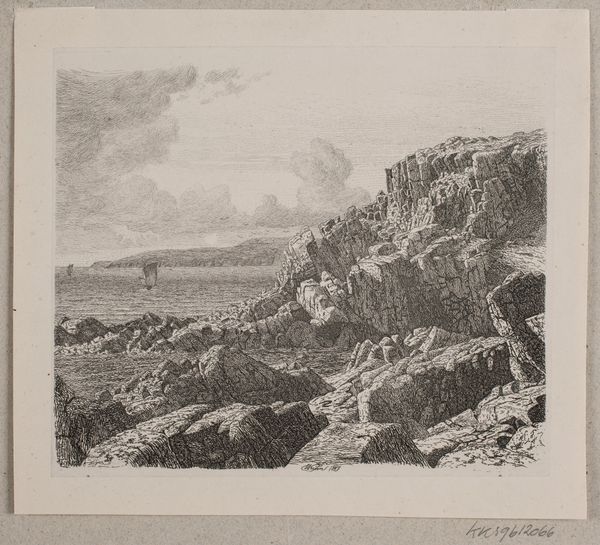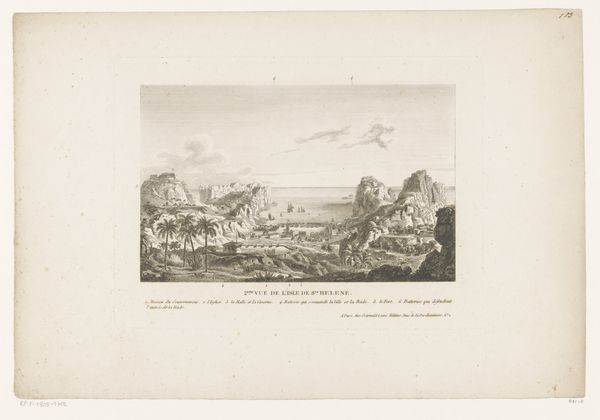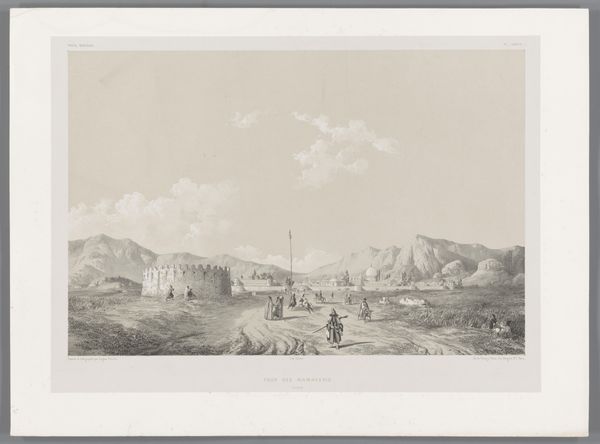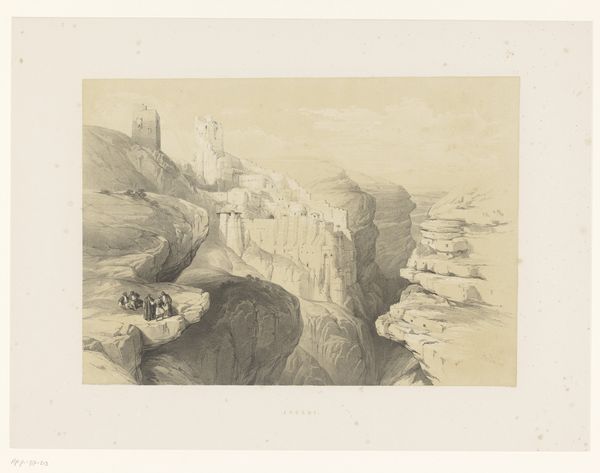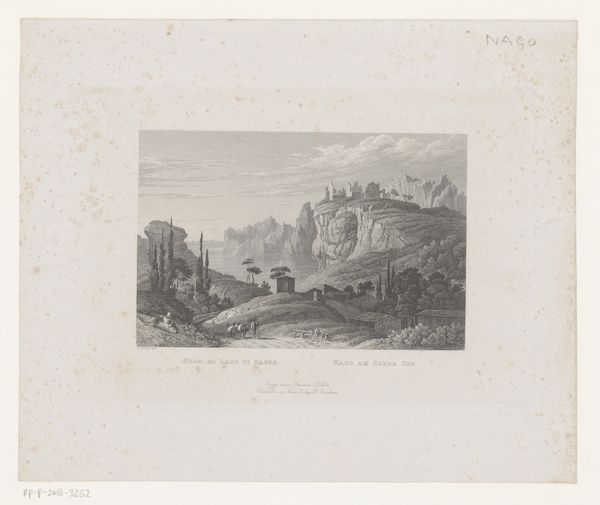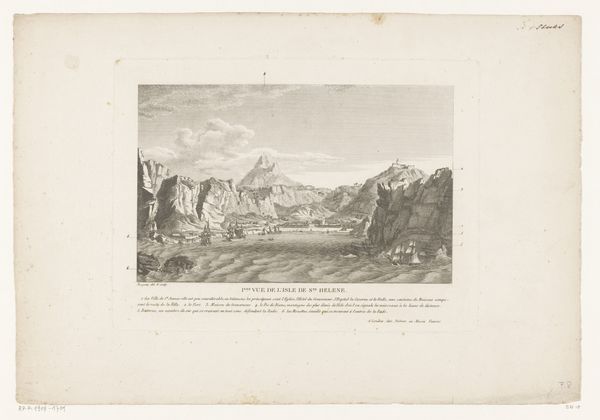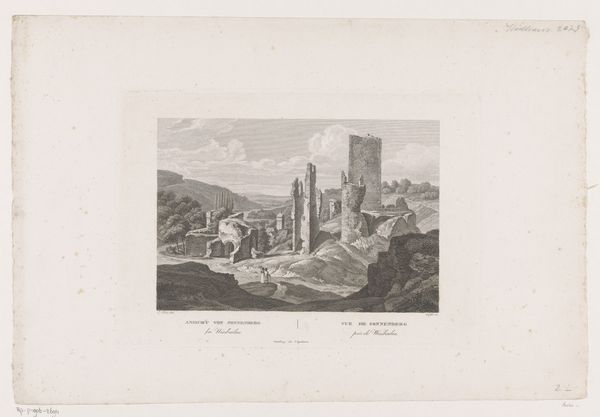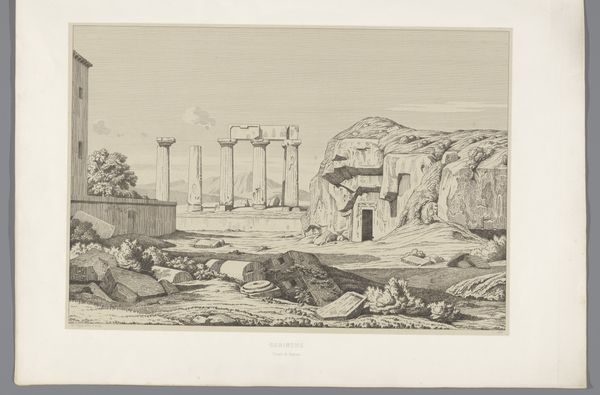
print, etching, engraving
#
neoclacissism
# print
#
etching
#
landscape
#
cityscape
#
engraving
Dimensions: height 441 mm, width 595 mm
Copyright: Rijks Museum: Open Domain
Editor: So, this etching by Claude-Félix-Théodore Caruelle d'Aligny, "Gezicht op Athene," or "View of Athens" from 1845, really gives a sense of austere grandeur. The classical ruins dominate, but they seem almost… lonely in this vast landscape. What stands out to you? Curator: Well, what strikes me is the specific way d'Aligny chooses to represent Athens in 1845. We're at a pivotal moment when European intellectuals are intensely engaged with classical antiquity. How do we, as moderns, relate to this perceived "Golden Age"? What elements does he emphasize or omit, and what does that tell us about the contemporary European gaze and its relationship to Greece? Is this truly a faithful rendering or a carefully constructed image meant to evoke certain emotions and ideas? Editor: That’s fascinating. It does seem carefully constructed, almost like a stage set. What were some of the prevailing ideas about ancient Greece at the time? Curator: In the mid-19th century, there was this pervasive notion that classical Greece represented an ideal of reason, beauty, and democracy – although that idea often conveniently ignored aspects like slavery. It was a powerful narrative used to legitimize certain political and cultural values in Europe. Think about the architecture of the time, the neoclassical movement; there's a direct lineage there. This image participates in that dialogue by presenting Athens, and thus Greece, through a distinctly classical lens. Are there signs of the modern city here? Editor: I don’t see any… only the ancient ruins. So, by focusing solely on the classical elements, the artist reinforces a particular narrative about Athens, about Greece itself? Curator: Precisely. The engraving presents a specific vision, subtly shaping public perception and promoting certain ideals. He isn't documenting; he is making an argument. Editor: It’s so interesting to consider how art doesn’t just reflect history, but also actively shapes it! Thanks, that perspective really adds layers to my understanding. Curator: Absolutely. Looking closely, thinking about the context: it changes everything.
Comments
No comments
Be the first to comment and join the conversation on the ultimate creative platform.
